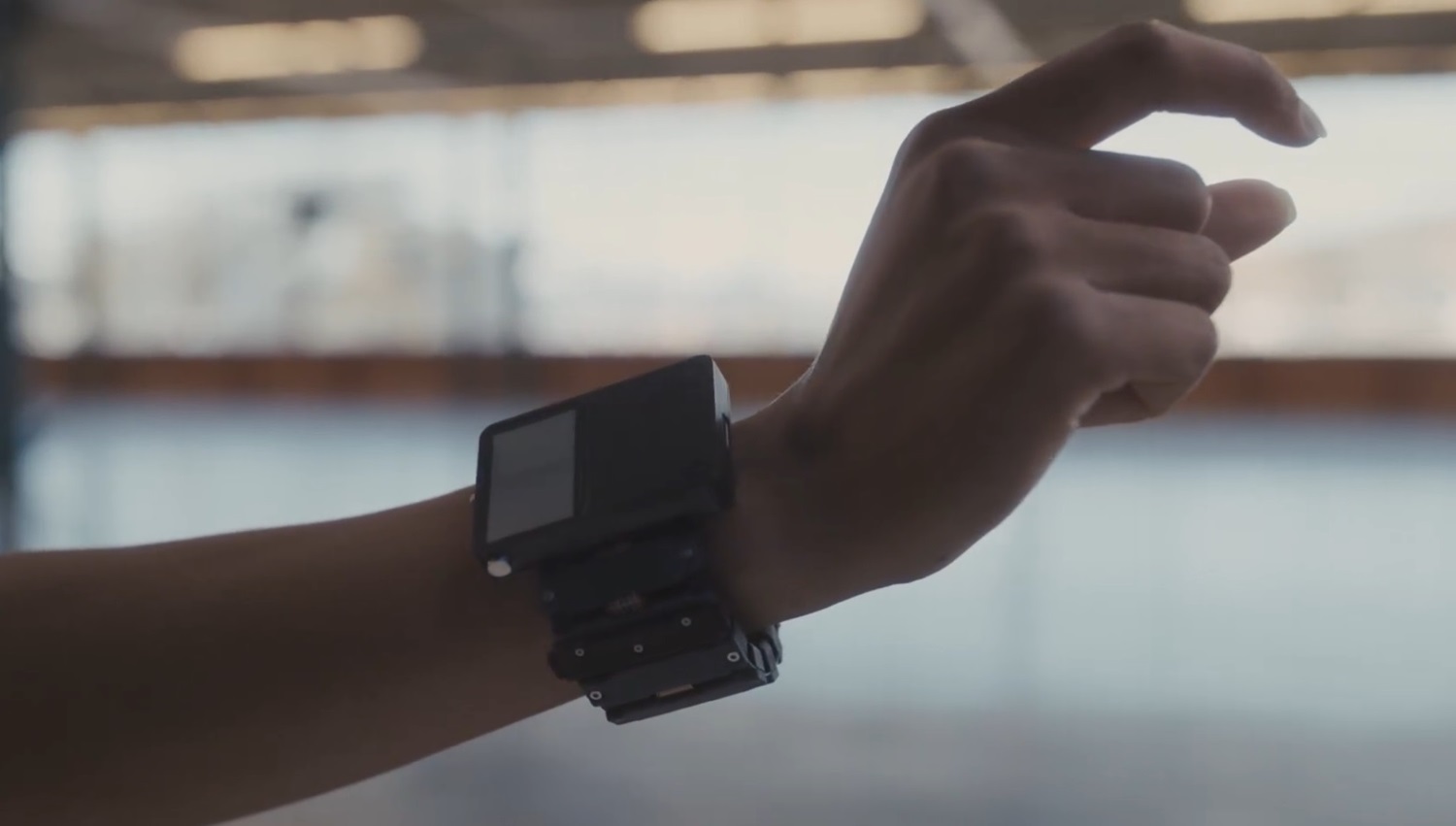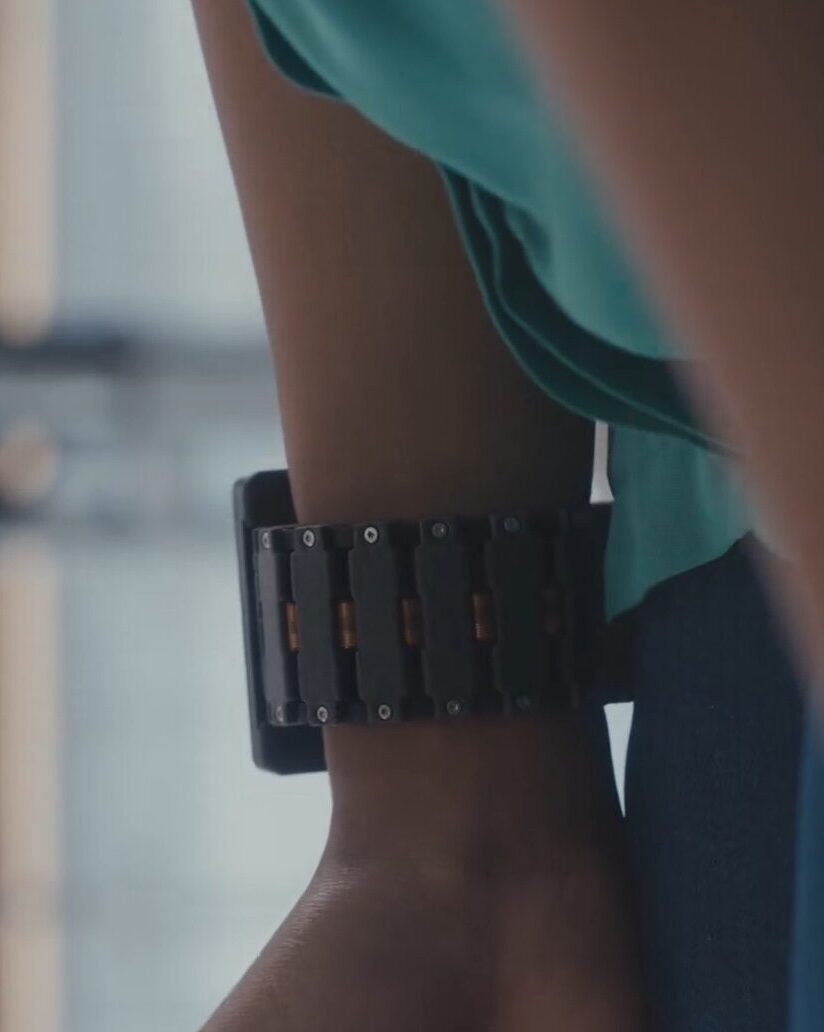How would you feel if a “wristband” you’re wearing on one of your wrists could read your thoughts and type them out in words thanks to Neural and AR technologies? Meta has shared the roadmap for its next-gen, never-before-seen smart AR-powered wristbands, which would integrate neural technologies and have the ability to allow you to type as you think.
Actually, the wearable is preached to track the wearer’s hand and finger movements by detecting the neural signals that pass through the nerves in the wearer’s arm – this ability concealed by the AR wristband is possible through a cutting-edge non-invasive technique known as electromyography.

Apparently, Augmented Reality (AR) has seen massive adoptions and technological improvements by many tech companies globally, with Meta being one of the top companies leveraging the tech in many areas, including VR headsets.
How Augmented Reality is Shaping Future Computing
Augmented Reality is a technology that allows humans to interact with virtual worlds – the virtual worlds/screens overlay right in front of the user and they can interact with the virtual world as though they’re interacting with the physical world. AR technology has been applied in many use cases and has continued to experience more adoptions.
Currently, AR technologies are built into mobile and IoT devices, where they are activated using voice commands or hand gestures. Well, companies like Meta are taking this technology to a whole new level, where users can trigger the tech to action by just “thinking.” The Meta’s upcoming neural-based wristband will also integrate Augmented Reality features.
Meta AR/VR Wristband Will “Type” and “Display” Your Thoughts
Facebook Reality Labs (FRL) research started experimenting a new product in 2021 and this product is expected to launch in 2028. It is going to be a wristband built to work with neural signals passing through the nerves on your arm.

Meta’s CEO, Mark Zuckerberg, states that he doesn’t buy the idea of having a chip implanted into humans for neural communications, so his team is coming up with a “safer” alternative for that, while still achieving the aim – in a more advanced way.
“There’s all this extra signal that your brain can send that’s not currently being used to move your fingers and in the future, you will essentially be able to type or control something by thinking about how you want to move your hand,” Mark Zuckerberg, Meta CEO.
The upcoming all-new Meta product is basically a wristband that tracks the electric signals that pass through your arm. You may want to argue that the Meta Quest headsets have finger-tracking capabilities; well, yes they do, but they use computer vision, which has limited accuracy (especially in dimmer conditions) and relatively high latency.
On the other side, the new wristband from Meta will support a new technology for finger tracking capable of reading neural electrical signals passing through your wrist to your fingers – this new technology is called electromyography (EMG). With all said so far about the EMG technique, one can only help but assume it’ll offer perfect accuracy with low or zero latency, irrespective of lighting conditions, and not work with occlusion.
“We’ve been working on this for a while, it’s not a one-year project. But we’re quite a few years into it and we’re close to having something, to having a product in the next few years,” Mark on the Morning Brew Daily interview.
Why Wrist-Based Interaction?
You may think, why build such tech into a “wristband?” The FRL admits that many intuitive sources could be used, but not all of them offer the level of privacy a wrist-based device could offer – especially in public places. Also, anyone could wear something on their wrist for a whole day and feel a lot more comfortable, for example, wristwatches.
Even so, the wrist is right next to the primary body part we use to interact with the world —the hands; this proximity means a lot and would make controlling the device more efficient. A wrist-based wearable obviously has more benefits to offer than any other type of input device that could be thought of.
Furthermore, being a wrist-based device, a rich input path is needed, and EMG seems a perfect solution for that. Electromyography (EMG) uses a suite of sensors to convert electrical motor nerve signals that run through the wrist to the hand into digital commands for controlling a device.
According to the FRL, the signals through the wrist are clear to the extent that EMG can understand finger motion of just a millimeter – effortless and highly accurate inputs are guaranteed.
Potential Applications of Wrist-Based Interaction
Meta’s AR/VR wristband may just offer multipurpose use cases: gaming, surfing the internet, meetings, recordings, and so much more. It could combine the features of a typical VR headset and that of AR glasses all in one device.
Nothing is certain yet about this new device, but Meta has confirmed through its product lead teams that along with this experimental neural AR wristband, the brand is also working on a “true pair of AR glasses,” which has been in development for eight (8) years.
Apparently, as the years come by, more information will be shared about these all-new devices – products, rather – being worked on by Meta. But one thing is sure, these devices will reshape future computing techniques.
Conclusion
The upcoming Meta AR wristband will be a smart wearable capable of reading neural signals and detecting even the slightest finger movements you make. It’s going to be powered by EMG for interpreting and converting neural signals into digital commands. The EMG provides just one or two bits of control, which could be called “clicks,” the equivalent of tapping on a button on an input device. Also, Meta will launch its first true pair of AR glasses soon – before the AR wristband.
